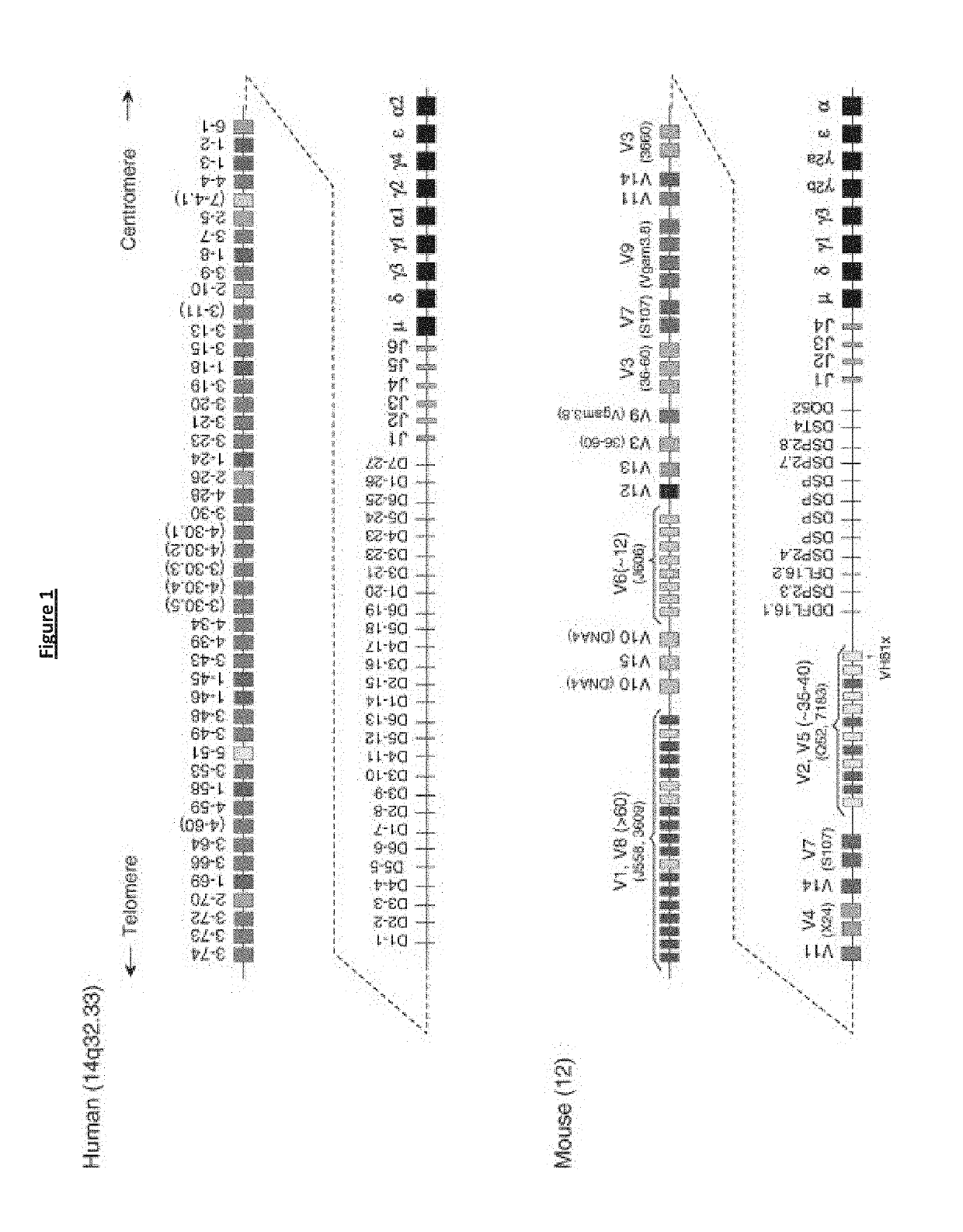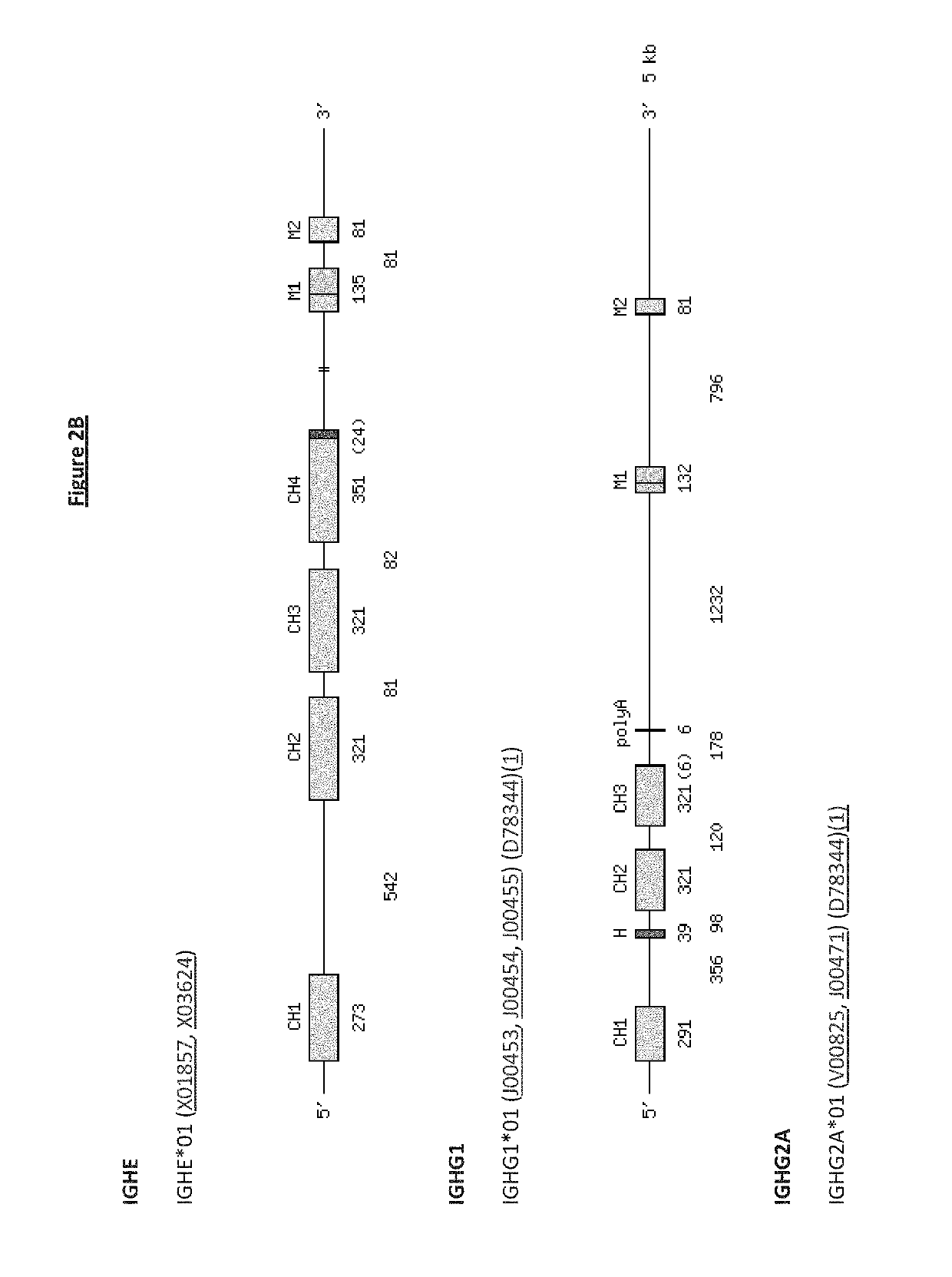Transgenic non-human vertebrate for the expression of class-switched, fully human, antibodies
a non-human, fully human technology, applied in the field of transgenic non-human vertebrate for the expression of antibodies, can solve the problems of reducing the desirable characteristics of the resultant antibody in vitro, reducing the utility of generating antibodies, and relatively small b-cell compartments
- Summary
- Abstract
- Description
- Claims
- Application Information
AI Technical Summary
Benefits of technology
Problems solved by technology
Method used
Image
Examples
example 1
“Recombineered BAC Vectors to Add Human C Gene Segments to the Mouse Genome”
[0339]Methods of replacing endogenous antibody gene segments with corresponding human gene segments harboured by BACs are generally known in the art, eg, as disclosed in WO02066630, WO2011163311 & WO2011163314 (Regeneron). These methods use standard homologous recombination. As an alternative, recombinase mediated cassette exchange (RMCE; see WO2011004192 & WO2011158009 (Kymab Limited)) can be used with cre-lox-mediated, transposon-mediated (eg, using piggyBac) or homologous recombination-mediated deletion of endogenous non-mu constant region sequences, in order to replace endogenous non-mu with human constant region gene segments.
[0340]Modified BACs with human C gene segments, for example created using the methods described in Example 1, can be used to alter the genome of non-human mammals (eg, mice or rats). These alterations can result in an intact Ig heavy chain locus in which normal immunoglobulin gene ...
example 2
“Adding Human C Gene Segments to A Non-Human Vertebrate Genome using SRMCE of Modified BACs”
[0345]As mentioned above, one technique to integrate modified BACs with human C gene segments into a genome is sequential recombinase mediated cassette exchange (sRMCE). The technique is described in WO2011004192 (Kymab Limited), which is incorporated here in its entirety by reference.
[0346]sRMCE provides for a locus modified with a ‘landing pad’ inserted at a specific location. This insertion can either be de novo via homologous recombination or as a consequence of a previous BAC insertion. In this example, the landing pad is inserted in the mouse IgH locus (in a mouse ES cell) 3′ of the mouse C-mu region. In the present example, the insertion is between the mouse C-mu and mouse C-gamma regions (eg, between mouse Cmu and Cdelta or between mouse Cdelta and mouse gamma-1). Using standard sRMCE with serial BACs, a human gamma-1 constant region is built up in the genome of the ES cell (and optio...
PUM
| Property | Measurement | Unit |
|---|---|---|
| AFFINITY | aaaaa | aaaaa |
| affinity | aaaaa | aaaaa |
| melting temperature | aaaaa | aaaaa |
Abstract
Description
Claims
Application Information
 Login to View More
Login to View More - R&D
- Intellectual Property
- Life Sciences
- Materials
- Tech Scout
- Unparalleled Data Quality
- Higher Quality Content
- 60% Fewer Hallucinations
Browse by: Latest US Patents, China's latest patents, Technical Efficacy Thesaurus, Application Domain, Technology Topic, Popular Technical Reports.
© 2025 PatSnap. All rights reserved.Legal|Privacy policy|Modern Slavery Act Transparency Statement|Sitemap|About US| Contact US: help@patsnap.com



